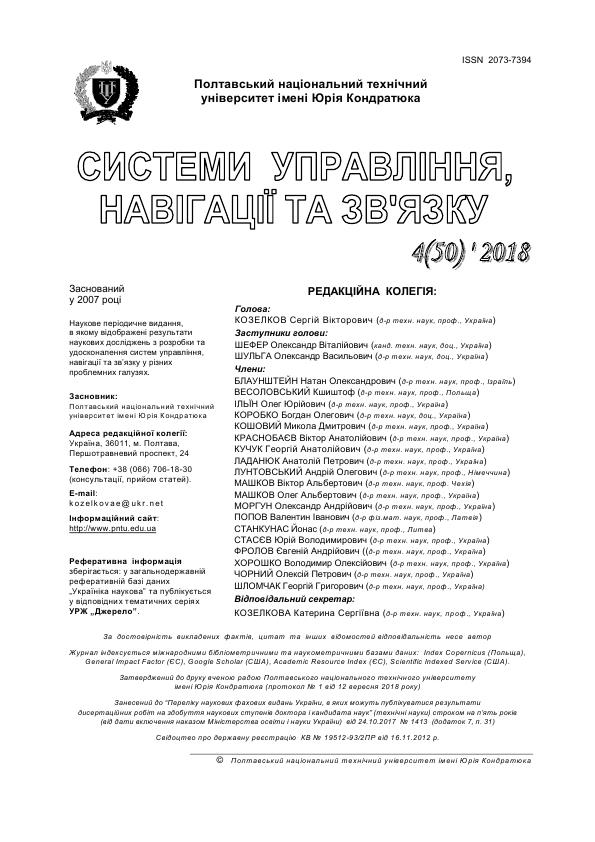THEORETICAL RESEARCHES OF SPATIAL VIBRATIONS OF VIBRATION INSTALLATION WITH PNEUMATIC VIBRATOR
DOI:
https://doi.org/10.26906/SUNZ.2018.4.073Keywords:
vibration installation, compaction, spatial oscillations, finite element method, efficiency, reliabilityAbstract
The subject matter of the article is the analysis of modern numerical methods for constructing and research of mathematical models of designed vibrating machines, to determine their motion. The goal of the article is to choose a method for constructing a mathematical model of a vibrating installation with spatial vibrations for compacting concrete products and a theoretical study of its movement, which will ensure the simplicity and adequacy of the model obtained, and also the possibility of its use in further research and in solving other types of problems. The tasks to perform theoretical studies of modeling and calculation by the finite elements method of the proposed scheme of a vibration installation with spatial oscillations for compacting concrete mixes. The methods used are: the finite element method. The following results were obtained: for the construction of a mathematical model, from the point of view of the modern approach it is effective to use computation complexes of general purpose, based on numerical calculations and the basic laws of the theory of elasticity, plasticity, and so on. The results of the calculation of structures by numerical methods (for example, by the finite element method) are movements (deformations), forces (stresses) in grid nodes of structural elements of a structure. Presented equations of the laws of motion and the dependence of the energies of the mathematical model of the developed vibration installation on the basis of the finite element method. Conclusions. Calculation of structures with the help of a numerical method allows even at the design stage of a vibration installation to obtain displacements and forces in the structure, the amplitude of the oscillations and the general picture of the operation of the constituents of the structural scheme of the machine and improve it in terms of rational use of materials and improve its performance. The basic laws of motion and energy dependences of the mathematical model of the vibrational system are established on the basis of the finite element method. Calculations by the given dependences made it possible to obtain a general picture of the motion of the vibrating machine. The use of such an approach to the implementation of new projects allows us to shorten the time for conducting experimental studies and finding more rational design solutions when designing them.Downloads
References
Research and the creation of energy-efficient vibration machines based on the stress-strain state of metal and technological environments. / I. Nazarenko, A. Sviderski, N. Ruchinski, O. Dedov. – The VIII International Conference HEAVY MACHINERY HM 2014, Kraljevo, Serbia, A, 2014. P.85 – 89.
Назаренко І.І. Прикладні задачі теорії вібраційних систем. Навч. пос. / І.І.Назаренко. – К.: Слов», 2010. – 440 с.
Пановко Я.Г. Основы прикладной теории колебаний и удара. / Я.Г. Пановко. – Л.: Машиностроение, 1976. – 320 с.
Bathe K. Finite Element Procedures./K. Bathe. – New-York: Prentice Hall, 1996. – 1037 p.
Montáns F., Bathe J. Computational issues in large strain elasto-plasticity: an algorithm for mixed hardening and plastic spin. /F. Montáns, J. Bathe// Int. J. Numer. Meth. Enging. – 2005. – № 63. – P. 159-196.
Weber G., Anand L. Finite deformation constitutive equations and a time integration procedure for isotropic hyperelasticviscoplastic solids. Computer Methods in Applied Mechanics and Engineering. – 1990. –№ 79. – P. 173-202.
Патент України на корисну модель №117955, МПК В28В 1/08(2006.01). Вібраційна установка для формування бетонних і залізобетонних виробів / І.І. Назаренко, П.П. Халімон, О.П. Дєдов, О.С. Дьяченко. – № u2017 01755; заявл.24.02.2017; опубл. 10.07.2017. – Бюл. №13/2017.




